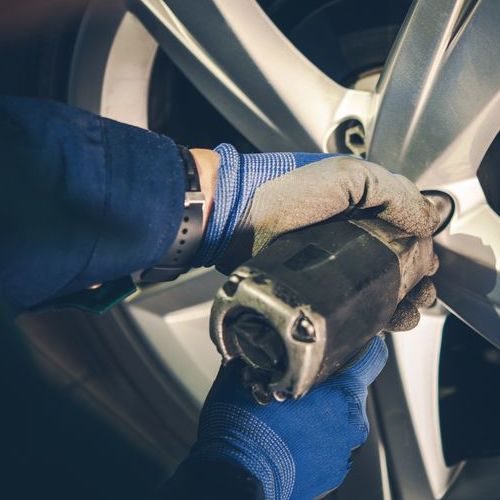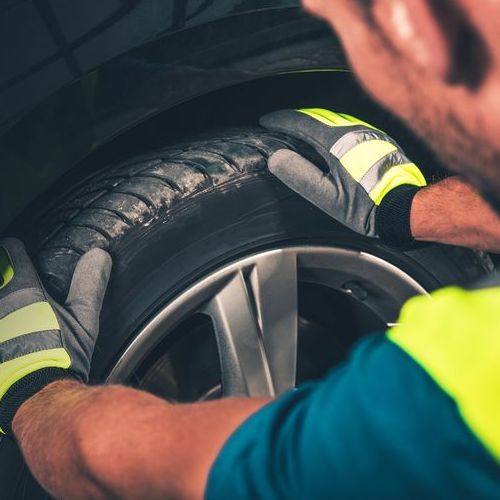
What happens if you wait too long to rotate tires?
The main reason you want to rotate your tires is to keep them from wearing out too soon. The recommended mileage to rotate the tires is every 6,000 to 7,500 miles. Waiting too long to rotate the tires can cause the tires to develop a permanent wear pattern. Besides reducing the tires’ lifespan, the pattern of wear can cause you to experience a rough and noisy ride.
Below are some good reasons why tire rotation is important:
- Ensures the tires wear evenly to extend the life of tires and save money.
- Tire rotation improves balanced handling.
- Prevents tread cupping which causes loud noises and vibrations.
- Rotation may be part of the tire manufacturer’s warranty and required for it to be upheld.
Are tire rotations free?
You may want to know: How much does it cost to have your tires rotated? Some companies offer free tire rotations, either as part of a package deal with other services like oil changes, or as a courtesy service.
If you need a tire rotation in Mission Viejo, CA, make sure to come by the car maintenance specialists at Japanese Car Specialties. Give us a call at 949-583-0811 to find out about all of our service offerings. We specialize in imported cars, in particular with Japanese car brands like Infiniti and Toyota, as well as Korean brands like Kia and Hyundai.
How is tire rotation done?
You can rotate your tires at home, or you can get them rotated professionally. Whether done professionally or at home, tire rotation follows a simple process. The first thing you need to determine is if your tires are directional or non-directional.
The tread pattern on directional tires is one-way, and the tires are specifically made for the right or left side of the vehicle. Arrows or triangles on the tread wall will indicate which way the tire turns. When you rotate directional tires, you will swap the front right tire with the rear right tire and the front left tire with the rear left tire.
For non directional tires allow you to mount the tire on any wheel. Use a cross pattern with non-directional tires, moving the front tires to the opposite side on the rear, so, for example, the right front tire will go onto the left rear wheel.
What happens when you get your tires rotated?
Basically a tire rotation involves switching the position of the tires to keep them from wearing out. It’s a simple preventative maintenance task and recommended about every 6,000 miles. When you rotate your tires regularly, you will lengthen their lifespan and you will have to replace them less frequently. Tire rotation and other services like wheel alignment and balancing services are important maintenance procedures that will ensure your tires last a long time.
Regular maintenance, including transmission service, is key to ensuring your vehicle runs smoothly and lasts you a long time. If you are hearing grinding noises as you drive you may need transmission repair.
Tire rotation with oil change
A good time to get your tires rotated is when you get an oil change. Japanese Car Specialties offers both services at affordable prices.
Tire rotation is alignment
You may think tire rotation is the same thing as tire alignment or front end alignment. Tire rotation is a completely different process than alignment. Although alignment is also meant to preserve the tires, alignment involves straightening the front tires to align with the rear tires, rather than moving them around. The angle of the car’s wheels are adjusted and the tire tread is checked. Your wheels can get knocked out of alignment by rough road conditions. If your wheels are out of alignment, you may feel your steering wheel pull to one side or another, or feel heavy vibration while driving, or may make driving difficult in general. It is recommended to check the alignment about every 10,000 miles.

Tire rotation without balance
Tire rotation, alignment and balance are all different processes that help preserve the tires and keep them from wearing out too soon. If you are determining the difference of tire rotation vs. tire balance, getting your tires rotated doesn’t mean they will be balanced at the same time, although it’s a good idea to have the tires balanced when you get your tires rotated.
When tire treads wear out, weight distribution begins to change and causes the tires to become imbalanced. This imbalance will cause the car to shake or vibrate. When you get your wheels balanced, the technician checks the balance with a calibrated spin balancer.
If your import has hit its next 6,000 miles and is giving you a rough ride, it may be time for a tire rotation in Mission Viejo, CA. Japanese Car Specialties specializes in Japanese and Korean import vehicles, so give us a call at 949-583-0811 to arrange your next service.